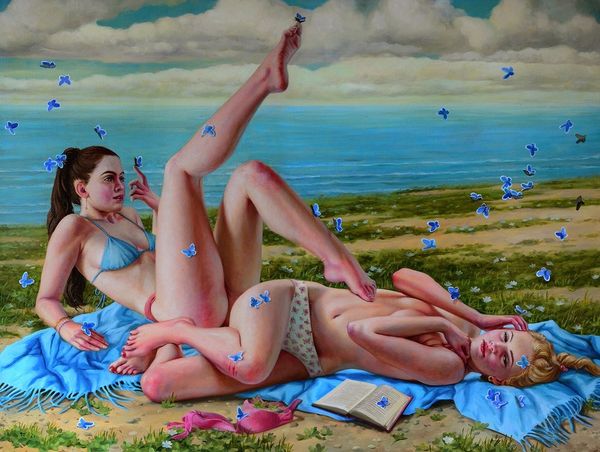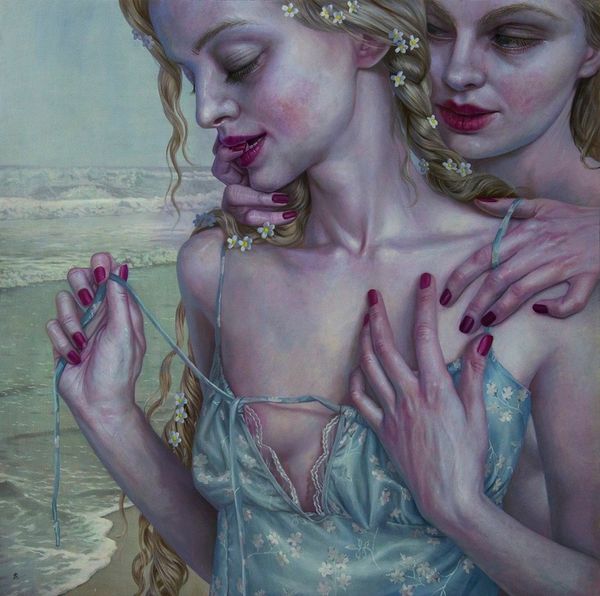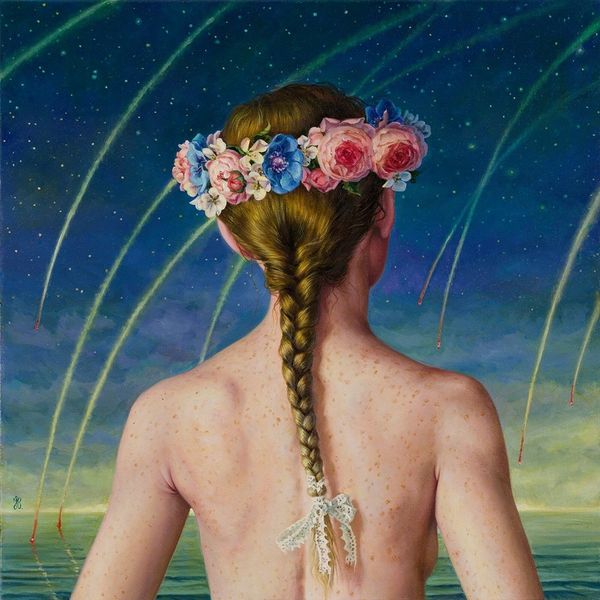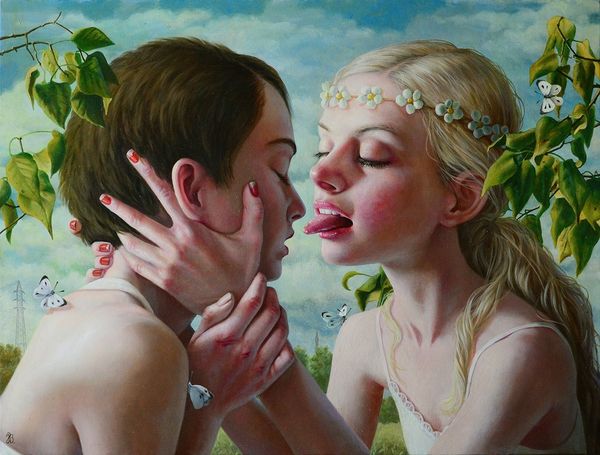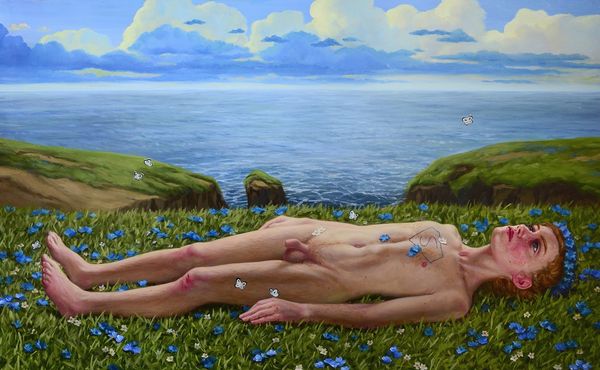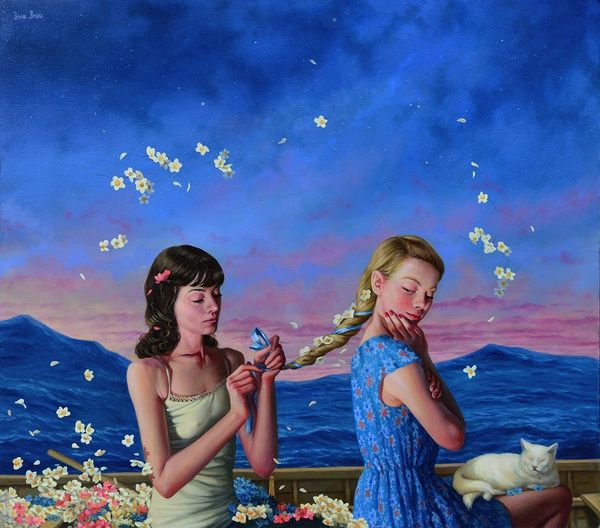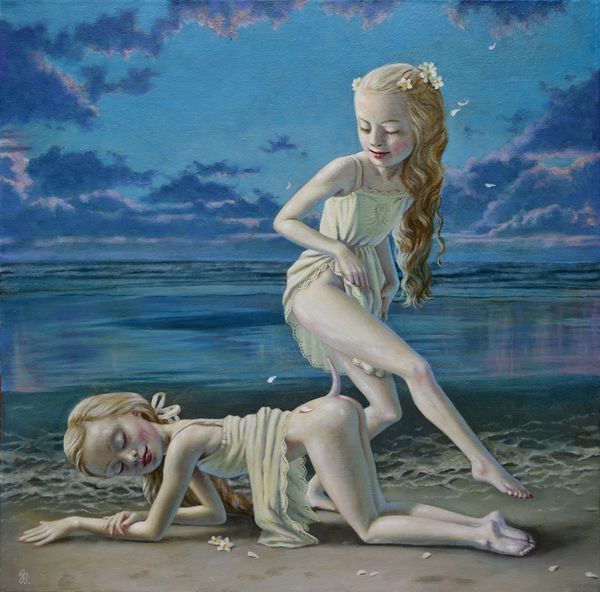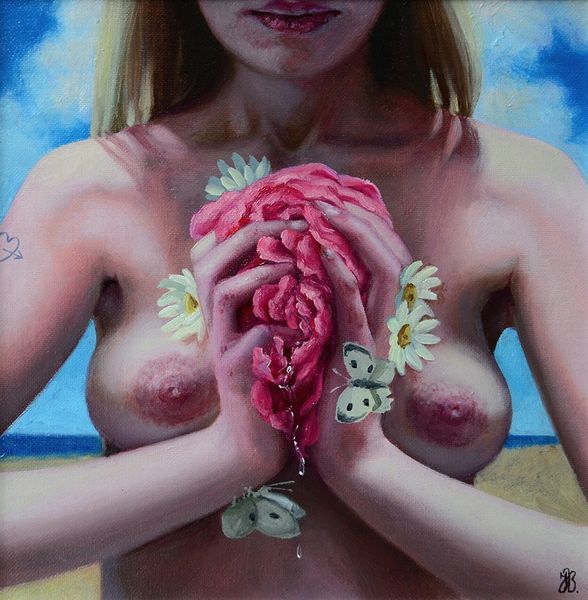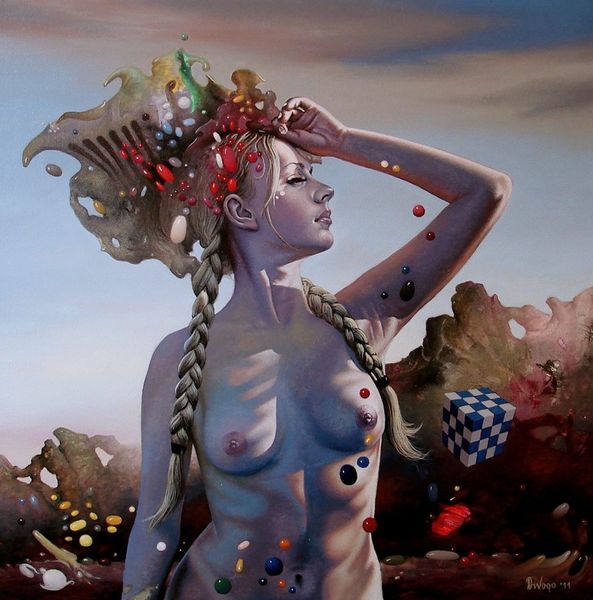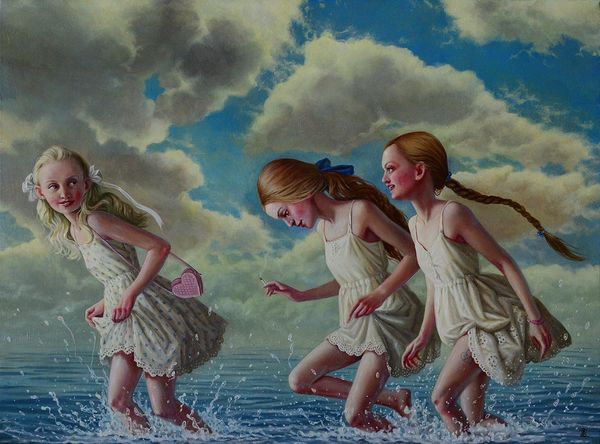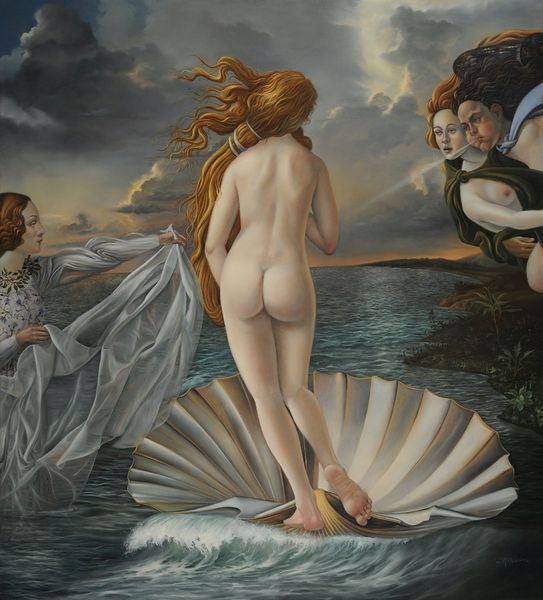
Copyright: Modern Artists: Artvee
Editor: Jana Brike’s “Two Wounded Angels on the Beach," painted in 2016 using oil paints, presents such an ethereal, melancholic scene. The girls’ vulnerable backs and sketched wings are incredibly poignant. How do you interpret this work? Curator: Well, it immediately prompts thoughts about societal expectations and the romanticized, yet often fragile, representation of innocence. The girls, seemingly on the cusp of womanhood, are literally marked as "angels," yet their wounded state points to a loss of innocence, doesn't it? Editor: It certainly does. The setting on a beach seems symbolic too—a liminal space, neither land nor sea. Curator: Precisely. It's interesting to consider the political implications too. Latvia, where Brike is from, has undergone massive social and political shifts. Do you think the "wounded angels" could symbolize a collective, national trauma or a lost sense of identity in the wake of those changes? Editor: That’s a compelling interpretation. The sketched wings also suggest something incomplete or potential unrealized. It makes you wonder if they are even able to fly. Curator: Exactly. Consider also how the art market and museum culture play a role in perpetuating certain images of women. By presenting these 'wounded' angels, is Brike critiquing or participating in this tradition? It's a crucial question to ask of any artwork with such potent imagery. Editor: I see what you mean. I hadn’t thought about how the art world itself could be part of the narrative. Curator: Art always exists within, and speaks to, a specific context. Reflecting on that context deepens our understanding, even of seemingly simple images. Editor: Thank you. I learned so much! Now I look at art with a new framework.
Comments
No comments
Be the first to comment and join the conversation on the ultimate creative platform.

